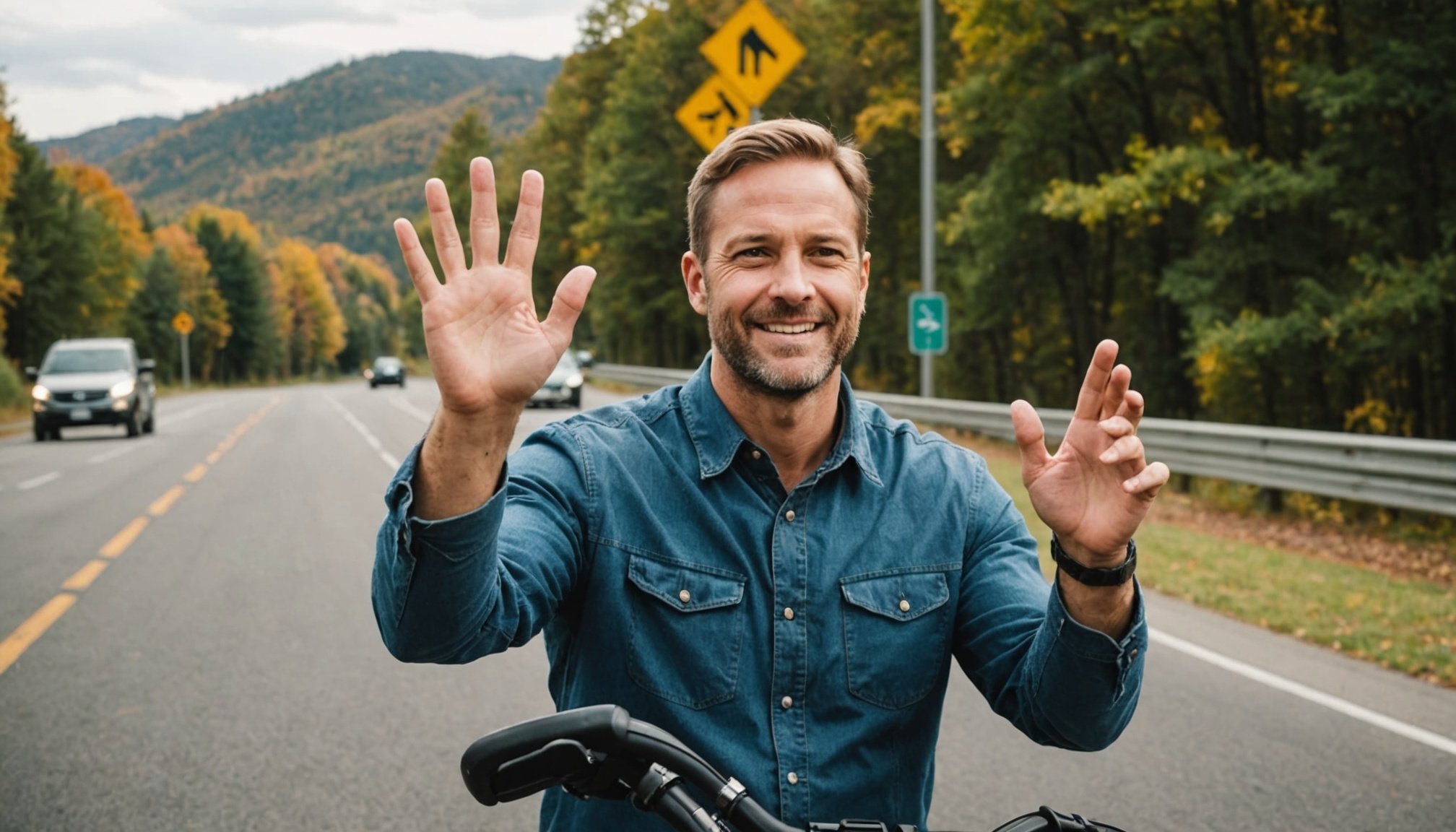In a world where technology often overshadows basic skills, understanding the traditional art of hand signals remains an invaluable asset for drivers and cyclists alike. These signals, often used when mechanical lights fail or in situations requiring clearer communication, ensure safety on the road. For those who frequently find themselves sharing lanes with cars, mastering hand signals should be a priority. This article delves into the essential hand signals, guiding you on how to effectively communicate intentions, maintaining harmony and safety among all road users.
Understanding the Basics of Hand Signals
The Importance of Hand Signals
Whether you’re a novice cyclist or an experienced driver, understanding and executing hand signals is crucial for everyone’s safety on the road. With vehicles zooming past, these signals bridge the communication gap, ensuring that your intentions are clearly understood. Given that drivers may not always rely solely on car signals, like turn indicators, these hand gestures serve as a universal language.
Also to discover : Mastering Your Suzuki GSX-R1000: Essential ABS Adjustment Settings Explained
The Three Essential Hand Signals
For those riding bicycles or motorbikes, mastering the following hand signals can prevent accidents and misunderstandings:
- Left Turn Signal: Extend your left arm straight out. This gesture is simple yet clear, indicating that you are making a left turn.
- Right Turn Signal: Extend your left arm out and bend it upward at a 90-degree angle. Though it feels counterintuitive, this is the recognized signal for a right turn in most regions.
- Stop or Slow Down: Extend your left arm downward, palm open, making an obvious gesture to drivers behind you that you’re reducing speed or coming to a stop.
Challenges in Communicating with Hand Signals
While hand signals are effective, they rely heavily on visibility and awareness from other drivers. It’s crucial to anticipate that not all drivers may recognize these gestures, especially in poor lighting conditions or heavy traffic. Time and consistency play pivotal roles in ensuring that these signals are understood, so practice regularly to build confidence.
Also to see : What are the benefits of taking a motorcycle safety course before hitting the road?
Proper Execution of Hand Signals
Preparing to Signal
Before embarking on any journey, ensure that you’re mentally and physically prepared to use hand signals. Confidence comes from practice, so rehearse these gestures in a safe environment until they become second nature. Anticipate your moves ahead of time to provide other drivers ample opportunity to respond.
Timing and Positioning
The effectiveness of a hand signal lies not just in the gesture itself but also in the timing and positioning. Always signal well before executing the action, around 100 feet ahead in urban areas or earlier on highways. Maintain eye contact with drivers where possible, reinforcing your intentions and enhancing safety.
Practice in Safe Environments
The best way to master hand signals is through repetition and practice. Consider joining a local cycling group where you can practice these gestures in a controlled environment. Riding with a group also helps in observing how experienced riders communicate effectively with other drivers on the road.
Enhancing Visibility and Communication
Importance of Being Visible
Visibility plays a crucial role when using hand signals. Equip yourself with reflective gear and ensure your bicycle or motorcycle is fitted with adequate lighting. This precaution helps draw attention to your gestures, especially during dawn, dusk, or nighttime.
Eye Contact and Body Language
Beyond hand signals, your body language speaks volumes. Maintain a visible posture and make eye contact with drivers when necessary. Acknowledging a driver’s presence can establish mutual respect and understanding on the road.
The Role of Group Riding
Riding in a group amplifies the effectiveness of hand signals. Drivers tend to be more attentive to a group, making it easier to communicate collectively. Practice synchronized signaling with your group to ensure everyone is conveying the same message, reducing the chances of miscommunication.
Advanced Techniques and Considerations
Adapting to Different Road Conditions
Different road conditions call for varied techniques in signaling. On narrow lanes, ensure your arm is clearly visible, and in wider lanes, consider exaggerating gestures for clarity. Adaptability is key to effectively using hand signals in diverse scenarios.
Legal Implications and Regional Variations
Understand the legal requirements regarding hand signals in your region, as these can vary. Some areas may have additional signals mandating specific gestures for certain actions. Familiarize yourselves with these nuances to avoid potential penalties and enhance safety.
Integrating Technology with Traditional Signals
While hand signals remain irreplaceable, integrating them with technology, such as wearable signal devices or smart helmets, can enhance their efficiency. These gadgets, designed to work in tandem with traditional gestures, ensure drivers have multiple cues to understand your intentions.
Embracing the art of hand signals is more than a nod to tradition; it’s a dedication to safety and effective communication on the road. As drivers and riders, it’s our collective responsibility to ensure our actions convey clear intentions, fostering a safer environment for all. By mastering and consistently practicing these signals, we not only enhance our safety but also inspire others to communicate more effectively on the road. Remember, the next time you venture onto the road, your hand signals are your most powerful tool for connection and safety.











